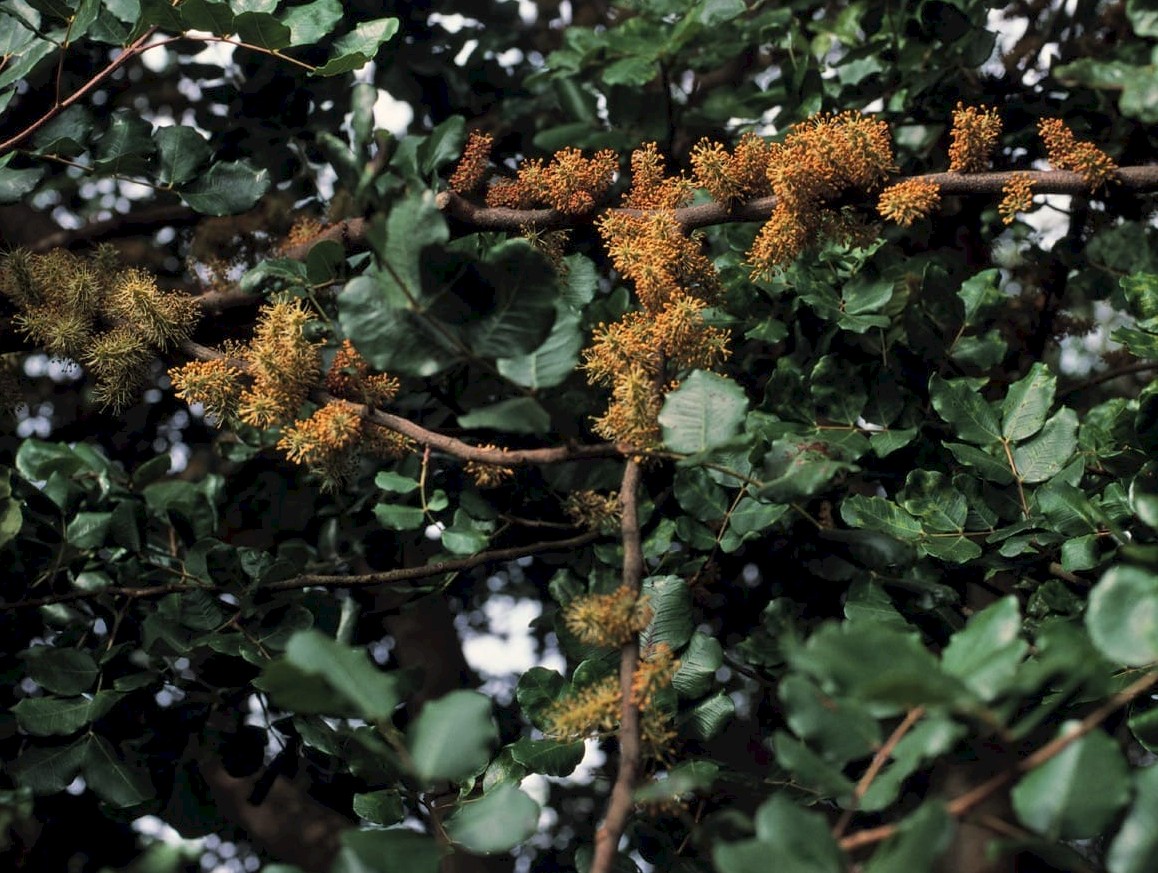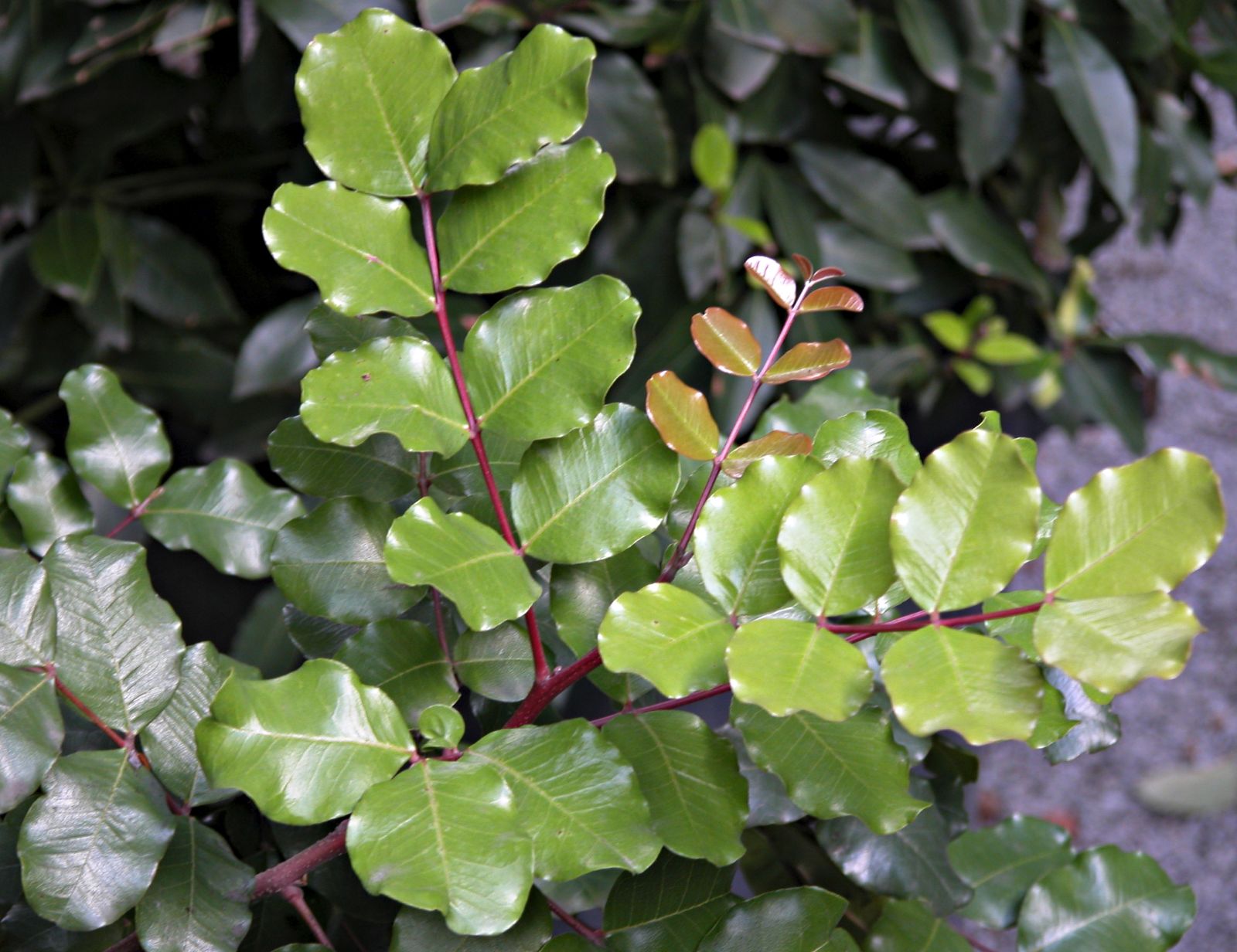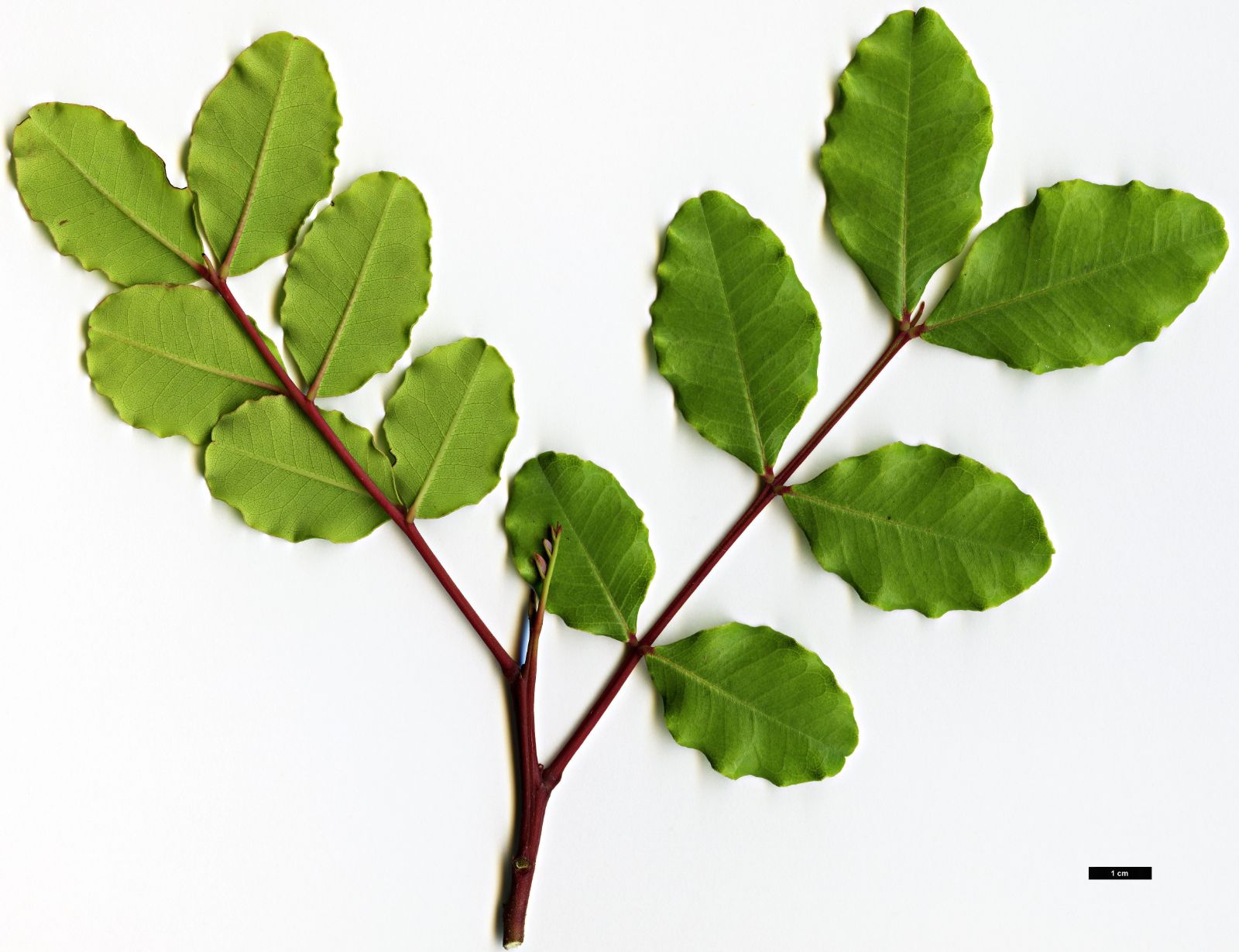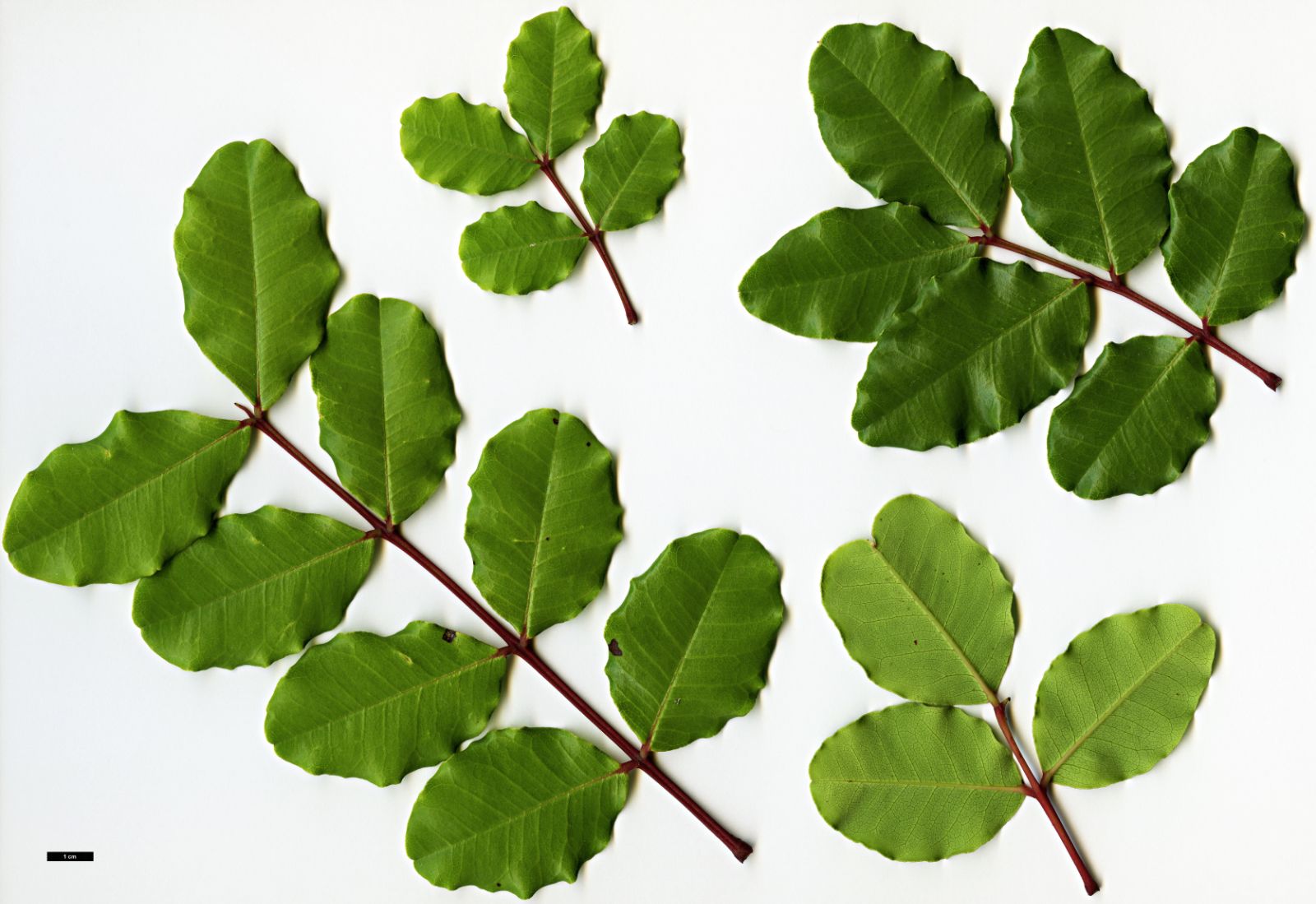Ceratonia siliqua
Credits
Article from New Trees by John Grimshaw & Ross Bayton
Recommended citation
'Ceratonia siliqua' from the website Trees and Shrubs Online (treesandshrubsonline.
Genus
Common Names
- Carob Tree
- Locust Bean
- Saint John's Bread
Other taxa in genus
Tree (rarely shrub) to 10 m; crown hemispherical, to 14 m wide. Bark initially smooth and grey, later rough and dark brown. Branchlets stout. Leaves evergreen, paripinnate (rarely bipinnate), dark glossy green above, dull grey-green below, 12–30 × 3–15 cm; leaflets 4–8(–12), petiolule under 0.5 cm long, oblong or obovate, 2–8 × 1–4.5 cm, leathery, margins entire, apex rounded or emarginate; petiole and rachis contiguous, 7–15 cm long, reddish, with longitudinal furrow along upper surface. Inflorescences can be entirely staminate, entirely pistillate, or all flowers may be hermaphrodite. In addition, some inflorescences are polygamous, with staminate, pistillate and hermaphrodite flowers together. Inflorescences cylindrical, rigid, 3.5–15 × 0.8–2.5 cm, bearing 20–60 flowers. Flowers densely packed, 5-merous, petals absent; staminate flowers reddish yellow, with unpleasant odour; pistillate flowers greenish, with no odour. Fruit an oblong legume, compressed, curved or straight, 10–30 × 1.5–3.5 cm, leathery, shiny dark brown. Flowering July to November, fruiting period variable (Cyprus). Meikle 1977. Distribution Wild origin obscure. Cultivated and ± naturalised in ALBANIA; ALGERIA; CYPRUS; EGYPT: Sinai; GREECE (incl. Crete); ISRAEL; ITALY (incl. Sardinia, Sicily); JORDAN; LEBANON; LIBYA; MALTA; MOROCCO; SPAIN (incl. Balearic Is.); SYRIA; TURKEY; YEMEN. Habitat Dry hillsides in garrigue, coastal and submaritime maquis and in transitional zone between Mediterranean scrub and Sahara; between 0 and 600 m asl. USDA Hardiness Zone 10. Conservation status Not evaluated. Illustration NT238. Cross-reference K309.
The gnarled trunks of the Carob are a common sight in the Mediterranean, where its fruits are put to a variety of uses, especially as animal fodder. The dark pods dangle seductively in front of seed collectors, with the result that its cultivation is frequently attempted in northern Europe. The results for the British Isles are summed up by Johnson (2007): ‘Never recorded to tree size here.’ It is cultivated in California, at least as far north as the Bay Area, but this is really a tree for Mediterranean climates, where its handsome foliage can provide useful shade.




